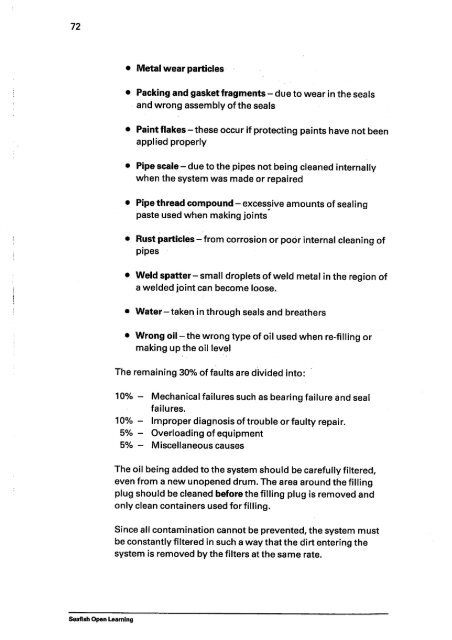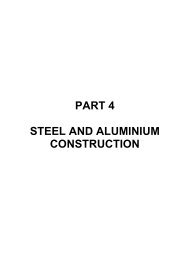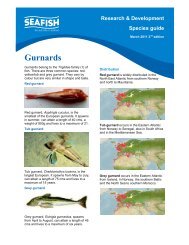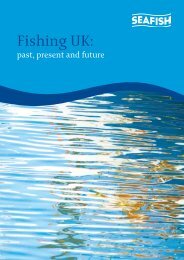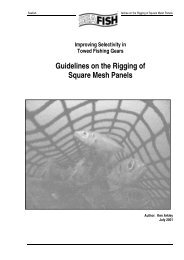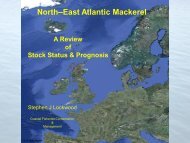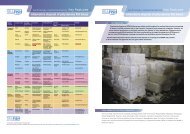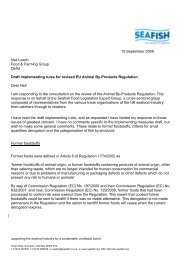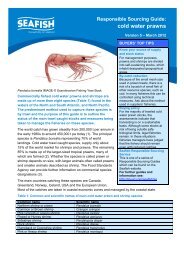Hydraulics - Seafish
Hydraulics - Seafish
Hydraulics - Seafish
You also want an ePaper? Increase the reach of your titles
YUMPU automatically turns print PDFs into web optimized ePapers that Google loves.
72<br />
• Metal wear particles<br />
• Packing and gasket fragments - due to wear in the seals<br />
and wrong assembly of the seals<br />
• Paint flakes-these occur if protecting paints have not been<br />
applied properly<br />
• Pipe scale-due to the pipes not being cleaned internally<br />
when the system was made or repaired<br />
• Pipe thread compound - excessive amounts of sealing<br />
paste used when making joints<br />
• Rust particles -from corrosion or poor internal cleaning of<br />
pipes<br />
• Weld spatter-small droplets of weld metal in the region of<br />
a welded joint can become loose.<br />
• Water-taken in through seals and breathers<br />
• Wrong oil -the wrong type of oil used when re-filling or<br />
making up the oil level<br />
The remaining 30% of faults are divided into:<br />
10% - Mechanical failures such as bearing failure and seal<br />
failures.<br />
10% - Improper diagnosis of trouble or faulty repair.<br />
5% - Overloading of equipment<br />
5% - Miscellaneous causes<br />
The oil being added to the system should be carefully filtered,<br />
even from a new unopened drum. The area around the filling<br />
plug should be cleaned before the filling plug is removed and<br />
only clean containers used for filling.<br />
Since all contamination cannot be prevented, the system must<br />
be constantly filtered in such a way that the dirt entering the<br />
system is removed by the filters at the same rate.<br />
<strong>Seafish</strong> Open Learning


